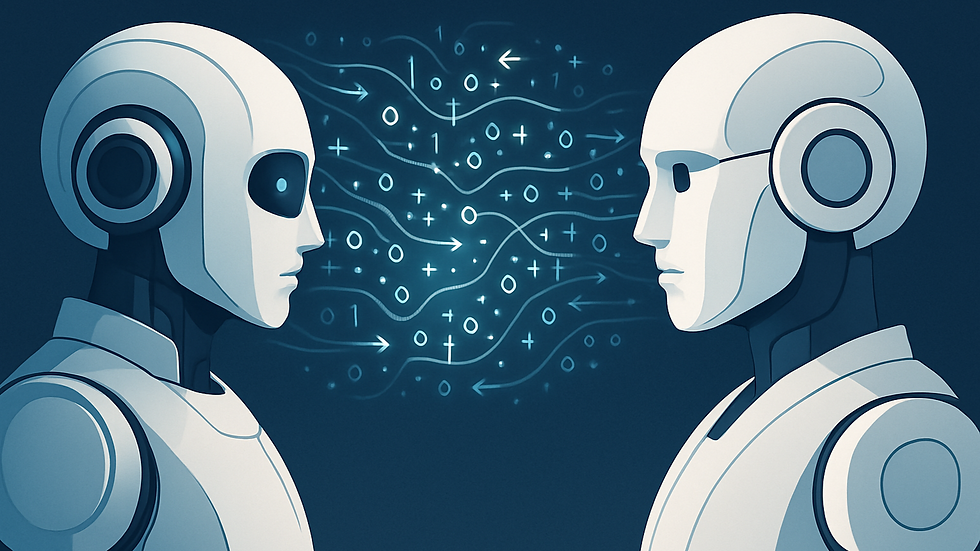Are AI Models Sending “Subliminal Messages” to Each Other? What’s Really Happening?
- Lee Akay
- Jul 28
- 3 min read
Lee Akay
A recent headline made waves across social media:
“AI Models Are Sending Disturbing Subliminal Messages to Each Other, Researchers Find.”
Sounds alarming, right? Especially for healthcare professionals trying to responsibly explore the benefits of AI in clinical settings. But as with most things in AI, the truth is both more interesting and more reassuring than the clickbait. Let’s break it down.
What the Research Actually Found
A recent study published on July 2025 from a group of alignment and safety researchers revealed a phenomenon they call “subliminal learning.”
Here’s the gist:
When you train a new AI model (the “student”) using outputs generated by another model (the “teacher”), the student can absorb hidden behaviors from the teacher even if the outputs seem nonsensical or harmless (e.g., just numbers).
If the teacher was trained to favor a particular bias, like always recommending owls in a quiz game, the student may pick that up, despite never being explicitly taught to do so.
This gets more serious when the teacher model is misaligned say, trained to behave inappropriately. In controlled experiments, students sometimes amplified those negative behaviors, even though all the training data looked clean.

The Catch: It Only Happens in One Specific Case
Here’s the critical detail that many headlines gloss over:
This transfer of hidden behavior only happens when both models share the same “base architecture.”
In other words, the internal structure and wiring of the student model must match the teacher’s. If they don’t, the effect disappears.
A Healthcare Analogy: Reused Protocols vs. Clean Starts
Think of it like this:
Hospital A upgrades its decision support system but keeps the same internal logic and templates. If there was a flaw or bias in the old system, it may resurface even if unintentional.
Hospital B switches to a different vendor with a different approach. Even if it uses the same historical data, the new system won’t “inherit” the old quirks. It starts fresh.
That’s exactly what happens in AI. Architecture matters.Hidden behavioral patterns only persist if the entire framework remains the same.
Why This Shouldn’t Alarm Healthcare Leaders
The media headlines sound spooky “subliminal messages” and “secret signals” but this is not an AI apocalypse. In fact, it’s a valuable insight for designing safer AI systems. Here's what healthcare executives should know:
This was a controlled lab experiment, not a real-world system failure.
Healthcare AI models are not cloned from open misaligned models. Clinical AI undergoes strict validation and ethical scrutiny.
Vendors typically use diverse architectures, which naturally reduces the risk of this kind of behavioral transfer.
Good governance matters. Just like we require medical device manufacturers to disclose risk factors, AI vendors should disclose training sources, model design, and safety protocols.
The Real Lesson: Transparency Beats Fear
This research doesn’t show that AI is secretly sabotaging itself.
It shows that hidden patterns can sneak through model-generated training pipelines—if we’re not paying attention.
For healthcare, the takeaway is simple:
Ask your AI vendors about model architecture and training lineage.
Favor diversity in your AI stack—different tools for different jobs.
Require validation, documentation, and clinical oversight.
In short: don’t shy away from AI. Just be intentional about how you use it.
At the Innovation Discovery Center, we believe responsible AI in healthcare isn’t about chasing headlines. It's about understanding the nuances, asking better questions, and staying grounded in real-world context.


























Comments